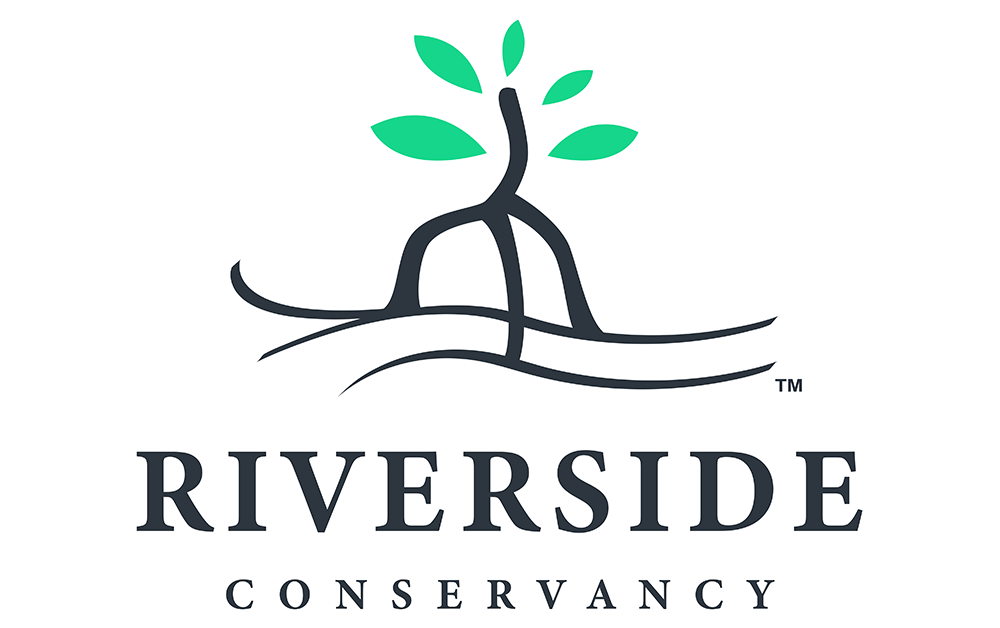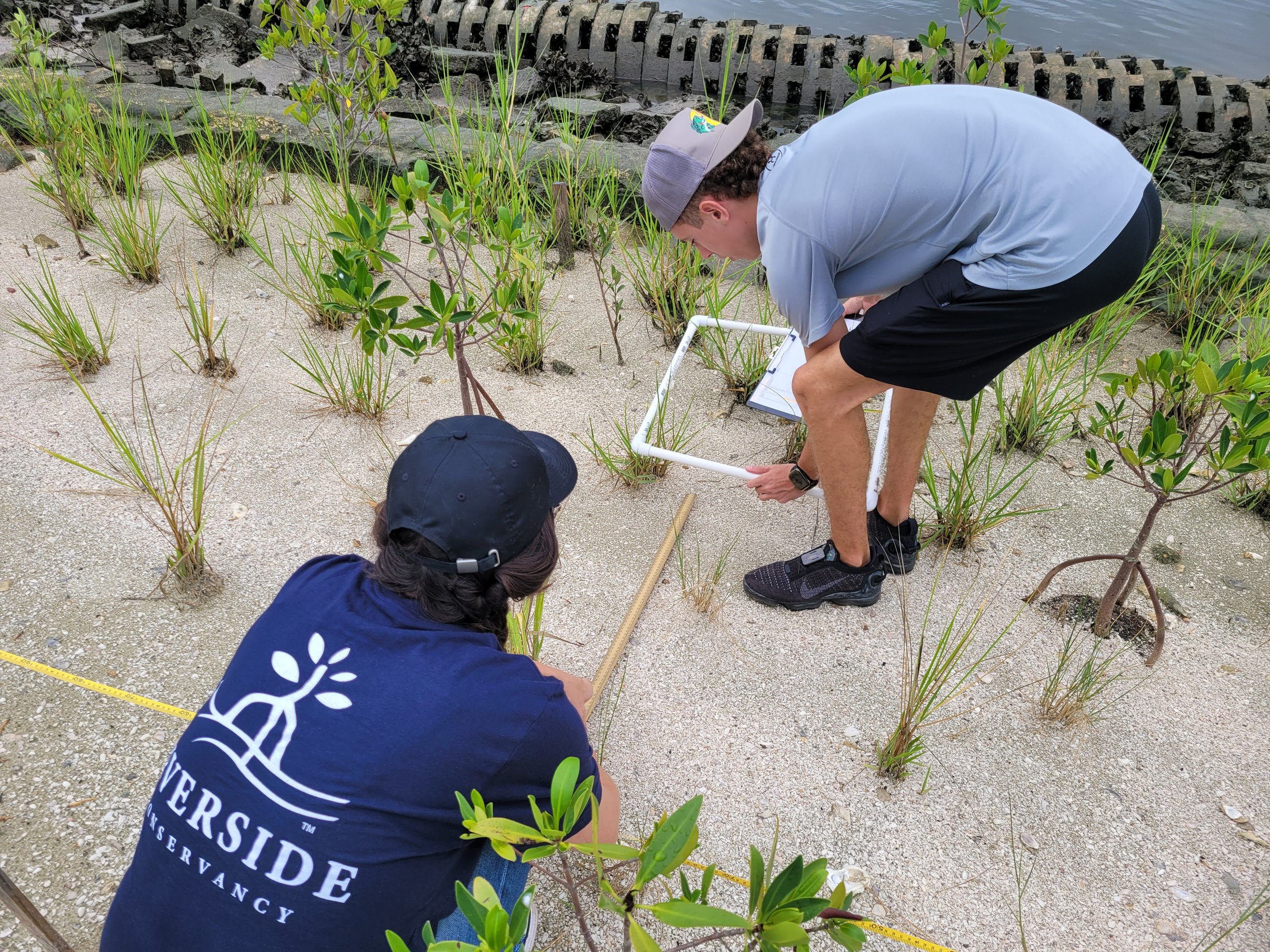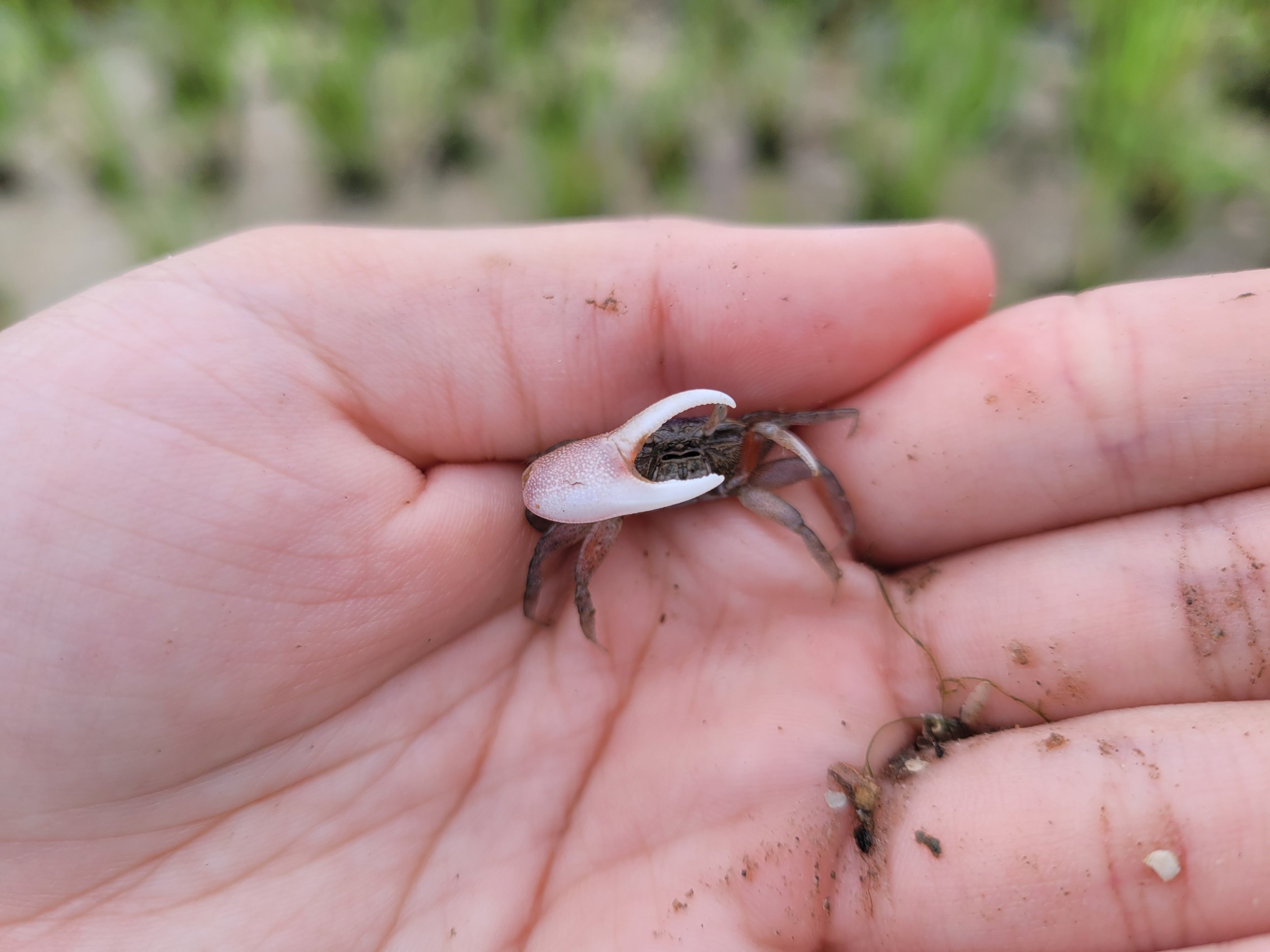BY LISA D. MICKEY
The restoration of Riverside Conservancy’s shoreline took another giant step recently when Atlantic fiddler crabs moved in.
Sarah Gaudreault, Riverside Conservancy Program Manager, was on the property in mid-July when a change caught her eye.
“I noticed holes everywhere [on the shoreline],” she said. “At first, I wondered if it was from probing birds poking holes in the ground looking for food, but when I waited and watched, I noticed the ground moving and saw fiddler crabs.”
Called fiddler crabs because of the male’s distinctive one enlarged claw that seemingly waves or “fiddles” in the air as a display to attract females or as a threat to other males, these small crabs are common residents of the tidal sands of mangrove and salt marshes spanning from Massachusetts to Texas. In fact, there are more than 100 members of the genus Uca living in temperate to tropical habitats.
But there’s more to fiddler crabs than just demonstrative little crustaceans that burrow, simultaneously move en masse with other crabs to their burrows when retreating from perceived threats, or live up to its Latin name, Uca pugilator, with its waving appendage. The arrival of fiddler crabs is an indicator of overall habitat health.
“It tells us that our restoration is working and we’re in the beginning stages of animals coming back to the shoreline,” said Gaudreault. “Before the restoration, our shoreline was elevated and it was concrete, so there was no access for these smaller aquatic animals.”
“There was no reason for them to come here because there was no food for them,” she added. “The fact that a colony has established here means that it is now suitable habitat.”
According to one study published in Ecology, fiddler crabs can burrow to depths of up to 30 centimeters (nearly 12 inches). These crabs have been observed turning over nearly 18 percent of a shoreline’s upper 15 cm (nearly six inches) of salt-marsh sediment, helping to oxygenate (aerate) marsh sediments and redistribute nutrients.
The result of that perpetual soil shoveling has served to enhance the growth of Spartina alterniflora – the planted Florida cord grass used in restoration that often serves as a primary salt-marsh vegetation.
“Actually, quite a few of the fiddler crabs here have made their burrows right next to the cord grass, so maybe it provides some type of structure, but it also offers them some detritus for nutrition,” added Gaudreault.
Indeed, fiddler crabs are detritivores, consuming decomposing plant and animal matter. They feed on microbes in the salt marsh that colonize decaying cordgrass.
Using its claws, the fiddlers will draw in a mouthful of sediment. They have the ability to separate edibles from inedibles from the soil, spitting out the inedibles into tiny mud pellets that can be seen scattered around a salt marsh.
Slightly larger mud balls also may be seen on the shoreline. Sometimes called “housekeeping balls,” these round pellets of soil are the result of the fiddler excavating dirt from the burrow it digs, pushing the small spheres out of the burrow’s entrance. Each fiddler crab has its own burrow and males even have “mating burrows” for breeding.
Following the discovery of the fiddler crabs on Riverside Conservancy’s shoreline, student interns at the center have been using quadrats for fiddler-crab sampling to better understand the colony’s size.
Gaudreault set up a transect based on the shoreline’s hydroperiods (tides), approximately three meters (nearly 10 feet) from the water. That area was then divided into one-meter increments (3.28 feet) over 19 meters (over 62 feet), which is nearly the length of the property’s shoreline. Students then used the quadrats for measurements to collect data.
“The southern side of the shoreline has most of the fiddler crabs, which is the side of the shoreline that is lowest in elevation, so I think the crabs that first established themselves came in from the lagoon,” added Gaudreault. “There aren’t as many crabs on the northern side of the property, but we’re still in the very beginning of the colonization because many of the crabs are not yet adult size.”
Female fiddler crabs can produce a clutch of up to 15,000 eggs two weeks after mating. The tiny eggs attach to her abdomen, which are released into the lagoon during a nocturnal high tide. The eggs hatch as planktonic larvae and attach to some type of substrate in the water. They develop into small crabs and eventually find their way onto a suitable salt-marsh shoreline where they will burrow, forage, mate and live for up to one or two years.
And as Riverside’s salt marsh continues to mature, its fiddler-crab colony also will expand and establish new habitat on the shoreline. The more fiddlers taking residence on the shoreline, the more their role in the coastal food chain is elevated for such animals as fish, birds and raccoons.
“The increasing number of birds we are now seeing on our shoreline are going to be especially happy to discover these fiddler crabs,” said Gaudreault.




